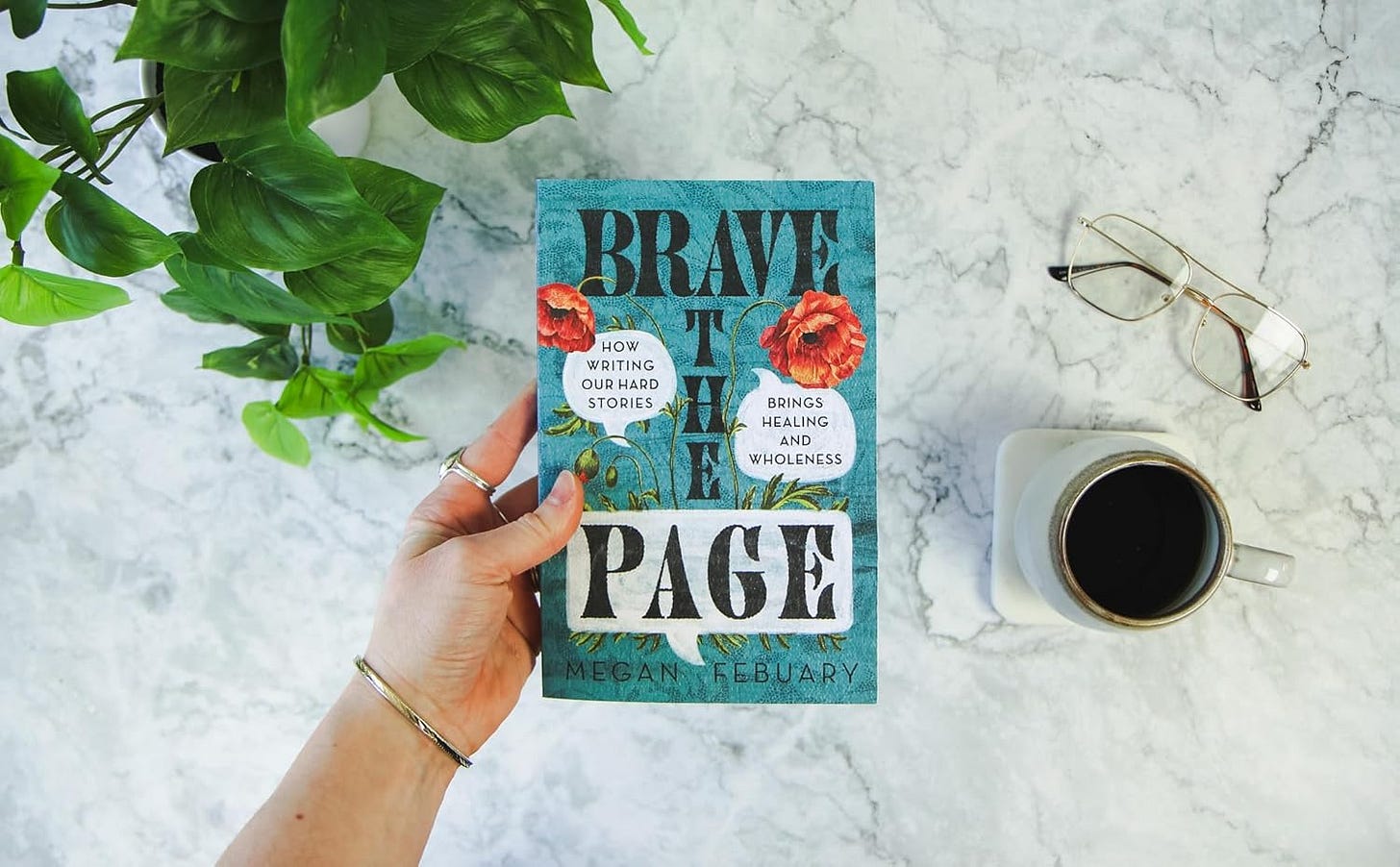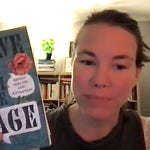Hi y’all,
Welcome to the Brave The Page book club. I am excited to read to you from what I consider to be the most critical chapter of this book, “Find Your Edges.” Every chapter is super significant, but this is the chapter that would have kept me from drowning when I began writing about trauma without any sense of guardrails or containment.
There is so much to speak to in this chapter that I cannot include here, so please read it if you haven’t, but the big thing I want you to consider is what kind of guardrails or grounding practice you can set up for yourself when you are writing tender material. I like to think of this trauma care practice as an Act 1, Act 2, and Act 3 in your writing about past pain. Act 1 would be before you start writing (perhaps a breathing exercise), Act 2 would be an intermission in the middle of your writing (set a timer to remind yourself to stop and do simple movement to bring you back to your body, and Act 3 (perhaps say thank you to your body and story for showing up that day). You make the 3-Act plan for how to care for yourself. Let me know yours in the comments, and what stood out to you from this chapter.
"It’s essential to remember that we are writing to create safety and containment with our body’s story. In a world full of screens and dissociative markers, it is so easy to lose ourselves, whether that is from casual dislocatedness from scrolling social media or from a trauma that caused us to split off from our body’s experience. When we practice writing, we are invited to return home to ourselves. This is an embodied experience of feeling the texture of the pen, the paper, the hands of the keyboard, the typewriter, and the tinge of discomfort in your wrist from writing for so long. As the scriptures say, it is “the word made flesh.” This is why putting pen to paper is always an embodied practice. Overall, writing can be a practice of trauma-informed care as we begin listening and engaging with the here-and-now experience of our body’s story. And is there a more powerful way to heal the wounds of our life than by tending to them?
When I began sharing these edges with my clients, do you know what finally happened for them? They showed up to their stories with kindness rather than a pressurized timeline and curiosity rather than contempt. When these edges took place, there was a thawing effect on the frozen stories within them. I cannot reiterate this enough: when you’re writing personal stories, you're an advocate for your own lived experience. And what is an advocate? One who supports, defends, and protects an important cause. By showing up to the page to listen and reflect on your life, you are the story advocate for your past and present trauma response by offering the safety and protection you always needed.”
Here is a prompt to consider:
+ Consider what trauma response shows up for you most commonly in writing tender material: fight, flight, freeze, or fawn? That way, you can recognize your response and care for yourself as it occurs.
+ Create an act 1, act 2, act 3 trauma care plan for your writing.
Please let me know what awakens for you, which quotes stand out, and anything else you’d like to share. I look forward to hearing from you.
Love, Megan
If you haven’t yet, you can order your copy (print/ ebook/ or audiobook) from wherever you buy books.
Sending love and chat soon,
Megan
Thank you so much for reading. I hope this space inspires your voice. This is a free and paid platform. Please choose how you would like to support it below.
If this feels like too big of a financial commitment, subscribe for free here.
My book, Brave The Page: How Writing Our Hard Stories Brings Healing and Wholeness, speaks to the sacred heart of writing tender stories and is now available! Get your copy and begin writing to heal your life.











Share this post